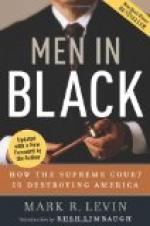In the year 1947 it seems almost unbelievable that the universal use by the public of Judicial Corporations should have been a matter of such recent economic growth. It is interesting to trace their development and the social causes from which they sprang.
The efficient administration of these co-operative Corporations being demonstrated by their financial success, makes it unnecessary to dwell upon the details of their intensely developed organization. Existing as they do upon so broad a comprehension of the whole commercial and social structures, it is little wonder that they have proven their value to the community. Their highly specialized departments of Issues, Investigation, Statutory Law, Records, Determination and Results correspond in a measure to the former method of procedure in the extinct courts of law and equity. Times have indeed changed.
The analogy between the present methods and the antiquated and conventionalized customs of those cumbersome and inadequate institutions is not difficult to find. The department of Issues, for example, corresponds to what was known as the pleadings in an action. These were formerly bits of paper governed as to form by inflexible rules, instead of the efficient method by which under the trained managers of able minds the matters in dispute, either of fact or law, are now narrowed down to exact points of difference. Naturally the methods of their managers being untrammelled by outside rules and they being men of wide experience and tact, the work of this department is not as difficult as at the first commencement of Judicial Corporations was anticipated.
The departments of Investigation and Experts correspond with the former division of court trials known as evidence and testimony. Any explanation would be futile of this branch of a forgotten formalism. The ancient rules of evidence and court procedure could only be understood by contemporaries and an extensive research has failed to disclose very clear concepts even by them. The modern methods of the departments governing the ascertainment of facts, either through the experience of the departmental employees or the efficient work of trained investigators, have naturally been much aided by the invention of the Viviphone making all communication adequate and easy.
The departments of Statutory Law and Records even yet retain certain characteristics of a period when judicial officers and clerks represented to the public mind the embodiment of what was known as “Red Tape,” a true colloquialism descriptive of the attitude of official conservatism. These departments being governed according to the latest bibliographical methods are of merely supplemental value as reference. The Simplification and National Unification of Federal and State statutes has, of course, added greatly to the facility of this branch of the business.




